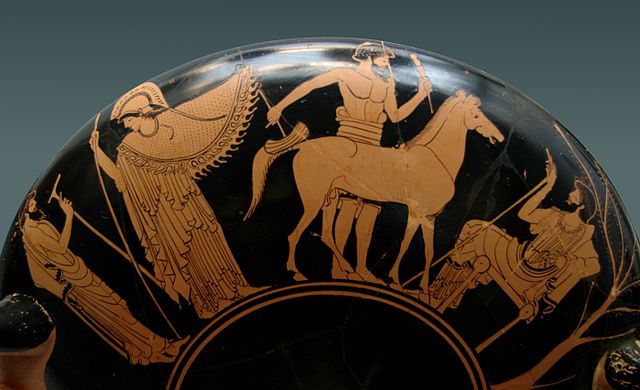Polykleitos was an ancient Greek sculptor, active in the 5th century BCE. Alongside the Athenian sculptors Pheidias, Myron and Praxiteles, he is considered as one of the most important sculptors of classical antiquity. The 4th century BCE catalogue attributed to Xenocrates, which was Pliny's guide in matters of art, ranked him between Pheidias and Myron. He is particularly known for his lost treatise, the Canon of Polykleitos, which set out his mathematical basis of an idealised male body shape.
Polykleitos's Doryphoros, an early example of classical contrapposto. Roman marble copy in the National Archaeological Museum, Naples
A Polykleitan Diadumenos, in a Roman marble copy, National Archaeological Museum of Athens
The Townley Marbles Discophoros, British Museum
Apollo of the "Mantua type", marble Roman copy after a 5th-century-BC Greek original attributed to Polykleitos, Musée du Louvre
The sculpture of ancient Greece is the main surviving type of fine ancient Greek art as, with the exception of painted ancient Greek pottery, almost no ancient Greek painting survives. Modern scholarship identifies three major stages in monumental sculpture in bronze and stone: the Archaic, Classical (480–323) and Hellenistic. At all periods there were great numbers of Greek terracotta figurines and small sculptures in metal and other materials.
Riders from the Parthenon Frieze, around 440 BC
Jockey of Artemision. Late Hellenistic bronze statue of a mounted jockey, National Archaeological Museum, Athens.
Natural marble
Athena in the workshop of a sculptor working on a marble horse, Attic red-figure kylix, 480 BC, Staatliche Antikensammlungen (Inv. 2650)








